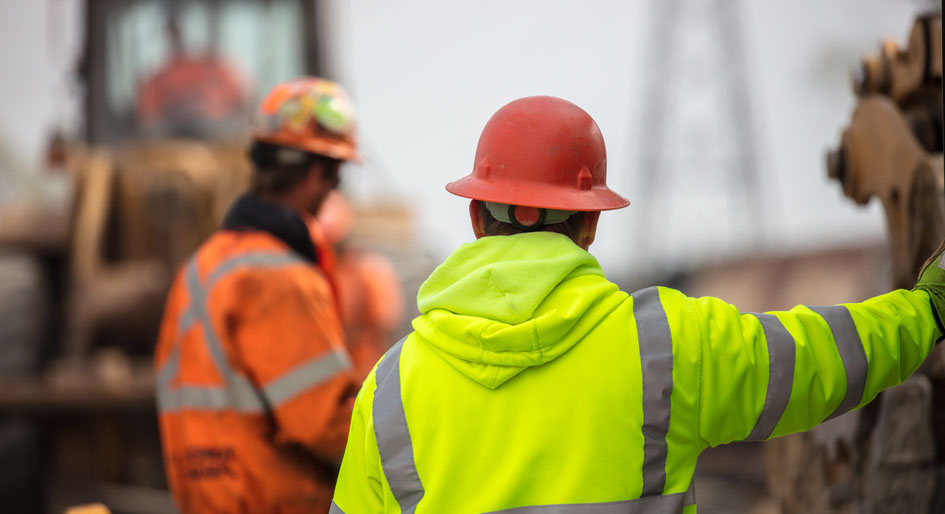Road construction is a hazardous occupation and ranked as one of the most dangerous places to work. While roads are now safer than ever before, incidents involving road workers have risen.
According to WorkSafeBC, injuries to roadside workers have spiked over the last decade with the majority of deaths caused by workers being struck by a vehicle.
Blind spots on vehicles are a major contributing factor to collisions and are often the main reason ground workers are killed or injured. As roads get busier, more construction work is being scheduled to take place at night, which further increases safety issues for workers and limits drivers’ visibility. Alongside this, ground workers are required to wear ear protection meaning they cannot always hear vehicles approaching. Preventing deaths and keeping workers safe is clearly a challenging yet essential task.
Technology is now playing a crucial role in solving many of the safety issues facing the road construction industry. These include eliminating blind spots on vehicles and assisting drivers working in difficult conditions when visibility can be compromised, such as bad weather or overnight.
While large mirrors have traditionally been used, they cannot completely eliminate blind spots, but commercial vehicle camera systems can. Safety technology can give drivers better visibility as they maneuver their vehicles by providing the driver with a complete surround view of the vehicle in real time in a single image.
The system combines images from ultra wide-angle cameras, resulting in a ‘bird’s-eye view’ of the vehicle and surrounding area. Research has shown that in the time it takes to scan four mirrors, assess and then react to hazards, a vehicle could travel as far as 33 feet. Vehicle camera safety systems protect the driver and ground workers in the vicinity of the vehicle.
Simple reversing [back-up] alarms have long been a solution to alerting those on the ground, but research has shown that old-fashioned tonal alarms may be adding to the problem as pedestrians and workers cannot always locate the direction from which the alarm originates. Multi-frequency alarms are solving this problem. Rather than the traditional ‘beep beep’ of tonal alarms, they create a ‘ssh-ssh’ sound which is gentle on the ear and dissipates quickly, meaning the alarm can be instantly located and heard only in the danger zone.
Radar obstacle detection technology is further enhancing safety in the construction industry. It can detect stationary and moving objects even in the harshest of environments giving the driver an audible and visible warning when objects are within a certain distance.
Heavy duty radar systems are able to operate even in high or low temperatures, radar obstacle detection is also waterproof and smoke resistant, and can be easily heard in noisy environments.
While technology is key to helping prevent injuries and deaths, it is also essential for companies to be fully committed to implementing robust safety strategies and plans so that demonstrable progress can be made.
Warren Di Marco is a vehicle safety expert at Brigade Electronics Canada. Brigade Electronics is a worldwide market-leading provider of safety devices and solutions for commercial vehicles and machinery.









